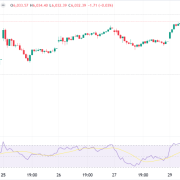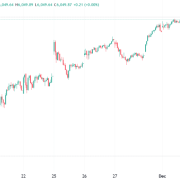
Blue Bird Corporation (NASDAQ: BLBD) saw its stock price tumble over 5% today following a downgrade from Roth Capital.
The investment firm shifted its rating from “Buy” to “Neutral” while maintaining its price target at $48.
The downgrade stems from concerns about the timely disbursement of $965 million in funding from the US Environmental Protection Agency (EPA) for clean school buses.
Investors reacted swiftly to the news, leading to a significant sell-off in the stock.
Roth Capital analyst Craig Irwin expressed doubts about the EPA’s ability to efficiently release the allocated funds.
The EPA’s Clean School Bus Rebate Program, which aims to replace diesel school buses with electric and low-emission alternatives, has already awarded $3 billion and announced an additional $965 million last month.
However, Irwin believes bureaucratic hurdles may delay the funding, potentially impacting Blue Bird’s revenue growth and order fulfillment in the near term.
Leadership turbulence at Blue Bird Corp
Adding to investor concerns, Blue Bird has experienced turbulence in its leadership team.
In early August, the company announced that Britton Smith would assume the roles of CEO and President effective September 29.
Just a month later, Smith resigned from his position due to personal reasons, effective September 28.
This unexpected leadership change has led CEO Phil Horlock to reassume the role of President.
Roth Capital cited this instability in management as a factor contributing to the downgrade, noting that it does little to build investor confidence.
Blue Bird Corp: robust financial performance
Despite these challenges, Blue Bird reported robust financial results in its third quarter of fiscal 2024.
The company posted non-GAAP earnings per share of $0.91, significantly surpassing analyst expectations by $0.40.
Revenue for the quarter reached $333.4 million, a 13.3% increase compared to the same period last year and beating estimates by $6.72 million.
This growth was driven by higher pricing and an improved sales mix, particularly in Type D and electric vehicles, although unit volume remained relatively flat.
CFO Razvan Radulescu highlighted that the third quarter yielded the highest-ever quarterly adjusted EBITDA for the company.
This strong performance prompted Blue Bird to raise its full-year guidance.
The company now expects net revenue between $1.30 billion and $1.33 billion, up from previous estimates, and adjusted EBITDA of $170 million to $180 million, representing a margin of 13.1% to 13.5%.
Furthermore, Blue Bird raised its long-term profit outlook, targeting an adjusted EBITDA margin of 15% on approximately $2 billion in revenues.
Blue Bird Corp stock valuation
The company’s optimism is underpinned by a healthy backlog and growing demand for electric vehicles (EVs). As of the third quarter, Blue Bird’s backlog stood at approximately $775 million, representing over 5,200 buses.
Orders for electric buses increased by 38%, leading to an EV order backlog of 567 units worth about $180 million—a 11% year-over-year increase.
However, the company adjusted its EV sales outlook downward by about 100 units due to timing issues related to EPA orders and delivery schedules.
Looking ahead, Blue Bird is poised to benefit from substantial federal funding aimed at promoting clean energy in school transportation.
The EPA’s Clean School Bus Program has allocated approximately $5 billion over the coming years, with around $4 billion still available.
The company anticipates securing a significant portion of these funds, expecting to win about 30% of the orders in the latest round, which could translate to 1,900 buses.
Additionally, the Inflation Reduction Act has earmarked $650 million for electric-powered buses, further enhancing the company’s growth prospects.
On the valuation front, Blue Bird’s stock appears to be trading below its historical averages.
The company’s forward P/E ratio stands at 14.74 based on FY2024 EPS estimates, which is a notable discount compared to its five-year average P/E of 30.25.
Analysts suggest that the strong demand environment, coupled with Blue Bird’s focus on operational efficiency and higher-margin products like electric buses and aftermarket parts, could lead to significant upside potential.
However, risks remain if federal funding faces delays or if the demand outlook weakens.
While the recent downgrade and leadership changes have created some headwinds, Blue Bird’s strong financial performance and optimistic guidance indicate resilience.
For investors weighing the mixed signals, the question becomes whether the current dip represents a buying opportunity or a warning sign.
To gain a clearer perspective, let’s turn to the technical charts to analyze the stock’s price trajectory and identify potential entry and exit points.
BLBD stock: emerging weakness
Blue Bird’s stock made its all-time near $60 in June this year but entered a bearish phase soon after. Despite its attempt to reclaim new highs, the stock has faced significant resistance trading above the $56 level.
Source: TradingView
Although it remains strong on long-term weekly charts, it has lost upward momentum in the medium-term and short-term charts. Having fallen below its 100-day moving average recently it is now on the cusp of falling below its 200-day moving average.
Taking these factors into account, investors who remain bullish on the stock must not initiate fresh long positions at current levels unless it shows signs of stability.
Traders willing to go short can do so near $45 levels with a trailing stop loss above the stock’s 100-day moving average. If the downtrend persists the stock can again fall back to its medium-term support near $31.5, where profits can be booked.
The post Blue Bird Corp falls 5% on Roth Capital downgrade: is it time to sell? appeared first on Invezz











